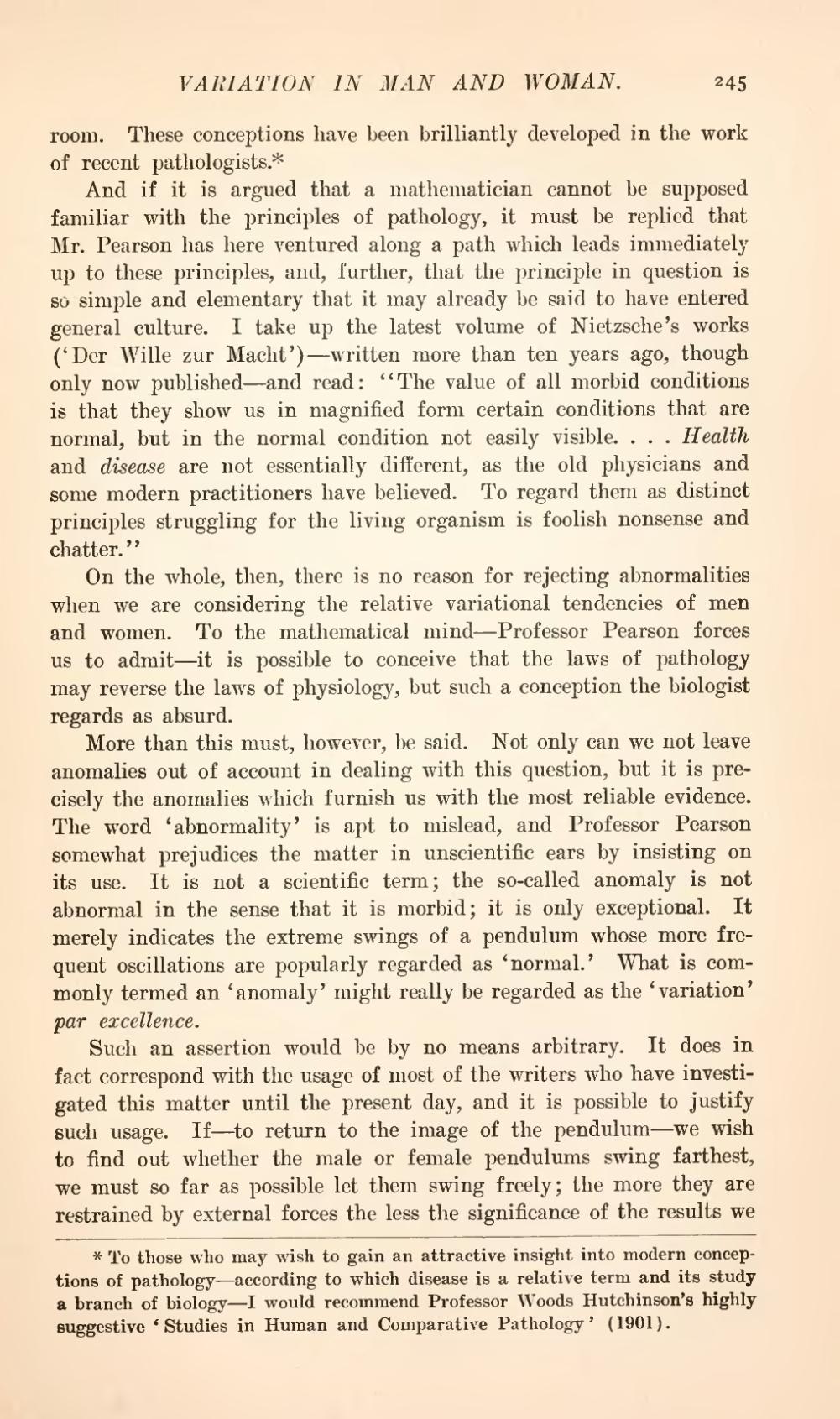room. These conceptions have been brilliantly developed in the work of recent pathologists.[1]
And if it is argued that a mathematician cannot be supposed familiar with the principles of pathology, it must be replied that Mr. Pearson has here ventured along a path which leads immediately up to these principles, and, further, that the principle in question is so simple and elementary that it may already be said to have entered general culture. I take up the latest volume of Nietzsche's works ('Der Wille zur Macht')—written more than ten years ago, though only now published—and read: "The value of all morbid conditions is that they show us in magnified form certain conditions that are normal, but in the normal condition not easily visible. . . . Health and disease are not essentially different, as the old physicians and some modern practitioners have believed. To regard them as distinct principles struggling for the living organism is foolish nonsense and chatter."
On the whole, then, there is no reason for rejecting abnormalities when we are considering the relative variational tendencies of men and women. To the mathematical mind—Professor Pearson forces us to admit—it is possible to conceive that the laws of pathology may reverse the laws of physiology, but such a conception the biologist regards as absurd.
More than this must, however, be said. Not only can we not leave anomalies out of account in dealing with this question, but it is precisely the anomalies which furnish us with the most reliable evidence. The word 'abnormality' is apt to mislead, and Professor Pearson somewhat prejudices the matter in unscientific ears by insisting on its use. It is not a scientific term; the so-called anomaly is not abnormal in the sense that it is morbid; it is only exceptional. It merely indicates the extreme swings of a pendulum whose more frequent oscillations are popularly regarded as 'normal.' What is commonly termed an 'anomaly' might really be regarded as the 'variation' par excellence.
Such an assertion would be by no means arbitrary. It does in fact correspond with the usage of most of the writers who have investigated this matter until the present day, and it is possible to justify such usage. If—to return to the image of the pendulum—we wish to find out whether the male or female pendulums swing farthest, we must so far as possible let them swing freely; the more they are restrained by external forces the less the significance of the results we
- ↑ To those who may wish to gain an attractive insight into modern conceptions of pathology—according to which disease is a relative term and its study a branch of biology—I would recommend Professor Woods Hutchinson's highly suggestive 'Studies in Human and Comparative Pathology' (1901).

